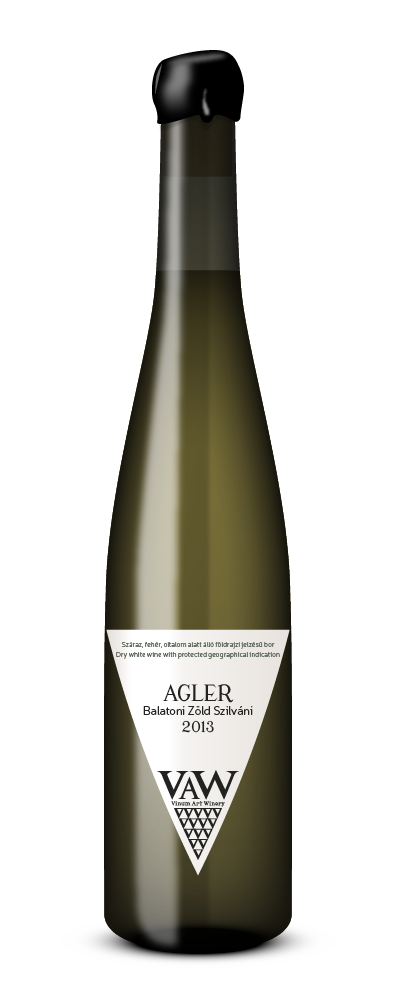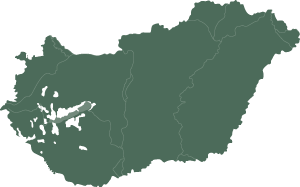Personal opinion:
Refreshingly buoyant and crisp. It is the precious wine (first vintage) of the fresh plantation of the 2013 Zöld Szilváni. This youthfulness defines its entire structure thanks to which the ending is a vivid acid sensation. Due to its easiness this unisex wine can fit into every day.
Gastronomical pairing:
I consumed it with a typically Hungarian dish: campfire beef stew. But it can lightly accompany any fattier dish.
About the Zöld Szilváni or “Green Silvaner” variety:
It is most probably a Hungarian variety that originated in Transylvania, but some ampelographers believe it is of Austrian origin. Before WW2 there were some 300 hectares on the vineyards of Transdanubia in clean plantings, but it has practically vanished by today.
Fortunately, owing to the work of enthusiastic winemakers more and more people discover this wonderful variety. Its vine-stock is delicate, medium in number, brown standing semi-rigidly, partly patterned, slightly grooved, with cylindrical canes. Its flower is androgynous, its true leaf is moderately large, round, light green, soft, flexible and barely shiny. Its ripe cluster is small, cone-shaped and packed. Its berry is small, greenish, round, barely velveted, soft-fleshed and juicy. Its breeding-season is short, it springs late, blooms at an average time and ripens early. It is frost-hardy and drought-tolerant, rots easily, sensitive to vine-mildew and downy mildew, and is greatly damaged by moths. Its wine is discreetly aromatic, specially spicy, harmonic, fiery, full-bodied and extremely fine.
The region and its history:
In the Badacsony area, vines were grown in Roman times, and Emperor Probus had sizeable plantings here. At the time of the settlement of the Magyars in Hungary they already knew about vines and wine. They appreciated areas capable of growing vine. A significant part of the wine region was taken over by the church in the 13th century. In the 18th-19th century the Badacsony vermouth gained a similar reputation to that of the Tokaj aszú in Europe.
During the reconstruction after the phylloxera epidemic, supporting walls were built to prevent soil erosion. New varieties also entered the area. The Szürkebarát was introduced from France by monks. Due to the special soil content it evolved into a typical local variety, the Szürkebarát, which botrytises in good years.
The variety grown in the biggest amount is Olaszrizling that is in better years ripened on the stock longer, and is used to make ice wine or late-harvest hand-selected Olaszrizling. Szürkebarát, Tramini, Sárga muskotály, Rajnai rizling and Chardonnay are also present on the larger lands.
Kéknyelű or " Blue Stem" used to be a characteristic wine of the region. It was significantly confined by the frost damage of the 1980's but is experiencing a revival today, and will be an emblematic wine of the Badacsony region again in the near future.
Badacsony wines are typically full-bodied, fiery, aromatic and mineralized. Traditional wine-making and maturation in wooden barrels are characteristic. Although reductive wine-making and other modern technologies are also spreading, they have not significantly changed the character of the region's wine, yet.
Climate and geography:
Badacsony is the highest mountain in the Tapolca Basin; it stands between two bays of Lake Balaton. The circumference of the almost round mountain is 11km, the diametre of its top region slightly elongated in the north-south direction is 1-1.5km, its highest point is 437.4 metres above sea level. Its hillside is covered up to 280 metres by various loose deposits that are excellent for growing vine, and its soil is basalt-based loess. It is covered by various loose deposit, Pannon clay and Pannon loess, above which there are basalt rocks. Its climate is mild and balanced with high humidity. Because of the proximity of Lake Balaton the southern hills can also enjoy the sunshine reflected from the surface of the water, therefore there is a very beneficial microclimate that makes the making of natural dessert wine possible.
The wine region includes the vine cadastre-based first and second class border sections of the following settlements: Ábrahámhegy, Badacsonytomaj, Badacsonytördemic, Balatonrendes, Balatonszepezd, Diszel, Gyulakeszi, Hegymagas, Káptalantóti, Kisapáti, Kővágóörs, Nemesgulács, Raposka, Révfülöp, Salföld, Szigliget, Tapolca.
NAME: AGLER
YEAR: 2013
VARIETY: Zöld Szilváni
WINE REGION: Badacsony
CLASS: Dry white wine with protected geographical indication
Product of Hungary
Bottle volume: 750ml
Alc. 12%vol
Contains sulphites


